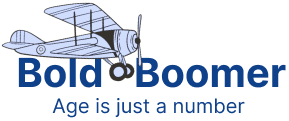In the realm of historical and cultural education, the reenactment of significant cultural events stands out as a powerful and immersive tool. These reenactments are not mere theatrical performances; they are living history, providing a vivid window into the past and offering participants and spectators alike a chance to experience firsthand the customs, struggles, and triumphs of bygone eras. For history enthusiasts and the general public, historical reenactments serve as a dynamic bridge connecting the present to the rich tapestry of our collective past.

At the heart of historical reenactments is the meticulous recreation of events, from famous battles and courtly gatherings to daily life in ancient civilizations. Participants often dress in period-appropriate attire, using historically accurate props and settings to bring authenticity to their portrayal. This attention to detail is crucial, as it not only enhances the realism of the experience but also pays homage to the historical accuracy and cultural significance of the events being reenacted.
One of the most compelling aspects of these reenactments is the interactive and engaging experience they offer. Unlike reading about history in books or watching documentaries, historical reenactments allow people to step into the past, engaging all their senses. The sights, sounds, and even smells of the historical period are recreated, providing a fuller, more nuanced understanding of what life may have been like during that time.


For participants, especially those who take on roles as historical figures or everyday people of the era, reenactments provide a unique form of experiential learning. By embodying the lives of individuals from the past, participants gain a deeper appreciation of the complexities and realities of historical periods, going beyond the often oversimplified narratives found in popular media.
These events also offer valuable educational opportunities for spectators, particularly younger generations. Witnessing a historical reenactment can ignite an interest in history and culture, fostering a deeper understanding of the events and forces that have shaped our world. For educators and parents, these reenactments can be used as powerful teaching tools, bringing history to life in a way that is both informative and entertaining.
Moreover, historical reenactments play a significant role in preserving cultural heritage. They keep historical traditions and stories alive, passing them on to new generations in a vivid and engaging manner. This preservation is crucial in maintaining a connection to our cultural roots and in ensuring that the lessons and legacies of the past are not forgotten.
Conclusion
In conclusion, the historical reenactment of cultural events offers a unique and immersive way to explore and connect with the past. These reenactments provide a dynamic platform for education, preservation, and appreciation of history, allowing us to experience the richness and diversity of human culture in a direct and engaging way. As we continue to relive and learn from these reenactments, we ensure that the stories and lessons of our past remain alive and relevant in the modern world.



Comments